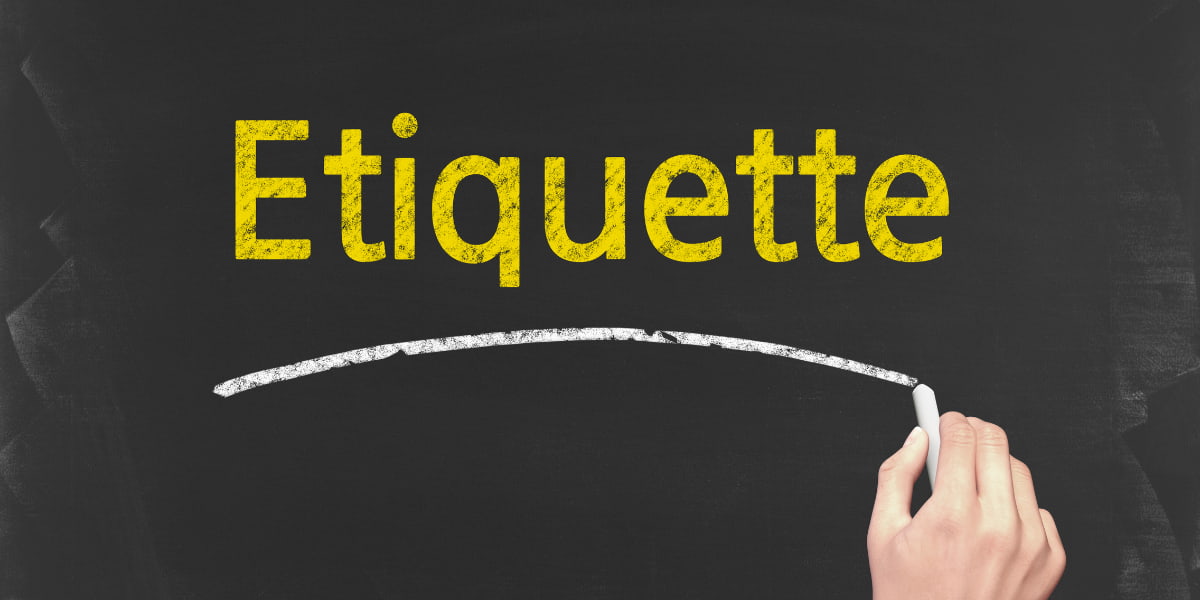
RSVP season approaches and suddenly you’re holding an invitation: guest list in hand, dress picked, but one question nags you. Who gets a plus-one, and when should you use it? Navigating plus-one etiquette sometimes feels like walking on eggshells, yet it defines your night and someone else’s planning.
Weddings, galas, family events, or milestone birthdays set the stage for invitations with sometimes-confusing language about additional guests. As more people mix social circles, clarity around plus-ones matters for relationships and planning alike. Bad assumptions cause awkward moments and can overwhelm hosts and guests.
This article unpacks plus-one etiquette by providing actionable scripts, checklists, and clear examples for every scenario. Let’s help you make the right impression and simplify your next RSVP.
Navigating Invitations: Decoding Plus-One Expectations Upfront
The moment you receive an invitation, scrutiny begins: Does it include “and guest” or just your name? Clear reading and fast action prevent mistakes. Start by reading every word on your invite. This sets expectations and avoids uncomfortable follow-ups later.
Family events, weddings, and professional galas each treat plus-ones differently, so look for hints and special notes. If “plus-one etiquette” isn’t explicit, small details often reveal the host’s true intentions regarding additional guests.
Scanning for Details: Examples of Invites and What They Mean
Emily receives an envelope addressed to “Emily Parker and Guest.” That means a plus-one is clearly offered, no further clarification needed. Later, Emily sees, “Emily Parker” only. She knows not to assume permission to bring anyone.
Meanwhile, Alex’s work event invitation says, “Alex Lin and partner.” This points to a specific invitation for a significant other rather than any guest. Finally, an invite that says “you and family” means immediate relatives, not friends.
To avoid embarrassment, match your RSVP exactly to what’s printed. Hosts appreciate clear, honest responses that respect their headcount and planning. The right answer: “Emily Parker will attend.” or “Emily Parker and Sam Smith will attend.”
Handling Unclear Language: When to Ask the Host Directly
Occasionally, invitations share ambiguous wording, like “Please join us to celebrate.” If you feel uncertain, reach out to the host politely. For example, write: “I’m looking forward to your celebration! May I bring a guest or should I come solo?”
Hosts appreciate guests clarifying before making assumptions. Wait for their response and stick to their guidance. Doing this boosts your consideration and shows respect for their efforts and guest list constraints.
Making early and clear contact sets a considerate tone for the event, making you look thoughtful and easy to accommodate. This small courtesy can streamline communication and provide immediate peace of mind for both sides.
| Invitation Wording | What It Means | Best Guest Action | Takeaway |
|---|---|---|---|
| Your Name & Guest | Plus-one clearly included | List your companion in RSVP | Bring a guest confidently |
| Your Name Only | No plus-one offered | Attend alone or ask before assuming | Don’t presume a plus-one |
| Your Name & Partner | Significant other invited only | Bring your partner, not a friend | Stick to the specified guest |
| You & Family | Immediate family only | Include partner/kids, not friends | Don’t add outside guests |
| Generic Invite | Unclear who’s included | Politely ask the host | Clarify before RSVPing |
Inviting a Plus-One: Thoughtful Steps for RSVPing Right
Giving a host clarity about your plus-one (or lack thereof) ensures a seamless event. Begin your RSVP with promptness and accuracy, as slow replies delay seating charts and catering plans. If you have a guest, provide their full name if possible.
Using plus-one etiquette, ask your intended guest early before committing them. Check they’re available, excited, and familiar with the event type, so surprises are minimal. If your plus-one declines, update your RSVP immediately with the host.
Clarifying Your Guest’s Role (and Comfort)
When offering someone to be your plus-one, set expectations about the event’s size, formality, and any key people they’ll meet. Share any dress codes, meal options, or location quirks to give them confidence and avoid mismatches.
- Ask your plus-one if they know anyone attending, so you can make intros or keep them engaged.
- Explain the event’s purpose (“It’s my cousin’s wedding, so lots of her friends will be there”).
- Double-check dietary restrictions in advance to prevent mishaps with meals.
- Arrange logistics (parking, arrival timing) ahead of the day instead of winging it.
- Let your plus-one know about your relationship with the host, which may guide conversation topics.
Step-by-step preparation helps both you and your guest feel welcome. This checklist approach creates smoother conversations for everyone involved and demonstrates strong plus-one etiquette to hosts and attendees.
Settling Uncertainties Early
If you’re not sure your guest wants to participate, don’t pressure them. Say: “I’m invited to Amanda’s party with a plus-one—would you enjoy going, or prefer to skip?” This scenario honors their preferences without awkwardness for anyone involved.
- Extend the invite openly, without assumptions (“I’d like you to join, but totally understand if not”).
- Share event details to help your guest make a clear decision.
- Acknowledge possible scheduling conflicts with empathy (“Work can be unpredictable, I get it”).
- If declined, update the host quickly to avoid over-counts on their end.
- Thank the guest for considering, regardless of their answer, and keep future invitations warm.
Communication minimizes surprises and shows both your host and your potential plus-one that you value their experience.
Balancing Relationships When Choosing Your Plus-One
Choosing who to invite as your plus-one impacts group dynamics, the host’s comfort, and your social ties. Prioritize long-term partnerships or significant others, especially for formal or family gatherings, following accepted plus-one etiquette.
For casual events, you may invite a close friend. Always match your choice with the invitation’s wording and respect for your host’s preferences to create positive memories for all involved.
Managing Sensitive Group Dynamics
Events with ex-partners, colleagues, or distant relatives can add stress to the plus-one decision. For instance, Jane hesitates to invite her current boyfriend to a wedding where her ex is a groomsman. In that case, Jane chooses a neutral friend instead, avoiding tension.
Social media can magnify group perceptions, especially if your plus-one’s attendance feels political. Choosing someone without baggage—like a new friend—prevents drama. Reflect on relationships and history before committing your RSVP.
If asked directly, reply with honesty. “Thanks for inviting me! I’ll bring my college friend Sam, since we both know the couple.” This keeps tone light and intent clear.
Bringing New Partners to Family Events
Taking a new relationship to meet family at a reunion or holiday dinner? Prepare your partner by sharing family quirks, inside jokes, and likely questions they’ll face. Practice answers together and keep things lighthearted to ease nerves.
Offer to introduce your guest early and stick close until they’re comfortable. If the event gets overwhelming, step outside together. These strategies help both your partner and your family feel relaxed about the addition to the gathering.
Afterwards, thank your family and your partner for their openness. Appreciation strengthens both relationships and affirms your good plus-one etiquette.
Responding to Invitations Without a Plus-One Option
Sometimes, invitations don’t provide space for a plus-one. Accepting these moments gracefully shows maturity and builds goodwill with hosts. Gracious guests trust the host’s decision rather than challenging it or asking for exceptions.
If you’re disappointed, make plans to reconnect socially with friends or loved ones at another time. Adjusting expectations makes events more enjoyable for everyone.
Refraining from Pressuring Your Host
If you hope to bring a guest, resist the urge to petition for more spots. Hosts juggle budgets, seating, and venue rules. Asking for special treatment puts them in an awkward spot—one that strains the relationship.
Instead, respond cheerfully: “Excited to celebrate with you! I’ll be solo this time.” Demonstrate respect for what the host can accommodate, as fitting in is always preferable to creating hassle behind the scenes.
For situations with unclear instructions, briefly confirm: “Just wanted to check, are additional guests invited?” If not, accept the answer with a smile and move forward graciously.
Enjoying the Event Solo
Attending by yourself builds new connections and broadens social horizons. Approach the event as an opportunity to mingle, meet new people, and step out of your comfort zone.
Engage others by complimenting their outfit, inquiring about their connection to the host, or joining group conversations. Plus-one etiquette means being a present and enthusiastic guest, regardless of your relationship status.
After the event, thank the host for including you; this simple courtesy ensures you’re remembered as a thoughtful attendee who enhanced the occasion.
Table Manners and Social Graces for Plus-Ones
Attending as someone’s plus-one means representing both yourself and your inviter. Practicing good manners, from punctuality to polite conversation, ensures you fit smoothly into group settings while making a favorable impression.
Learn event traditions: for formal dinners, let hosts or speech-givers kick off toasts; at cocktail parties, avoid monopolizing conversation or food spreads. Use plus-one etiquette to set a standard of respect for everyone present.
Introducing Yourself and Breaking the Ice
Upon arrival, introduce yourself with a friendly handshake and a confident smile. “Hi, I’m Taylor—Alex’s guest tonight.” Offer a brief note on how you know the inviter if prompted. This signals openness and gratitude.
Ask friendly questions about others. For example: “How do you know the host?” or “Have you attended their parties before?” Listen actively, allowing conversation to flow naturally, not taking the spotlight from your host.
Be mindful of seating, food service order, and when to join group chats. Observe body language for cues: if others stand and circulate, join the mix at the same pace.
Reflecting on Social Dynamics Throughout the Night
Observe the group’s energy and tone. If conversations grow animated, feel free to add your views, but avoid controversial topics. Maintain a positive, flexible demeanor, adapting to the mood without steering it in an uncomfortable direction.
Support your inviter: join them in photos, help clear plates if needed, or excuse yourself graciously for a break. Defer sensitive questions and redirect gently, keeping the host’s vibe in mind at all times.
Thank your host before you leave. Express sincere appreciation: “Thank you so much for including me.” This closing gesture encapsulates good plus-one etiquette for future invites.
Concluding Thoughts: Making Every Plus-One Invite Count
Clear plus-one etiquette results in pleasant, memorable events for you, your guests, and your hosts. Reading invitations closely, communicating transparently, and behaving thoughtfully sets the bar high for future gatherings. Each positive experience helps friendships and connections grow.
Social events work best when everyone feels respected and included. Adhering to plus-one etiquette fosters trust and harmony, whether you’re extending or accepting invitations. These actions remain key for any milestone celebration or everyday get-together.
The next time you RSVP, approach the process with kindness and precision. Thoughtful choices improve the experience for everyone. Good etiquette never goes unnoticed—or unappreciated—by your hosts and fellow guests alike.
Frequently Asked Questions
What should I do if my name is the only one on an invitation? Respect the invitation and attend solo. Reach out to the host only if the language is ambiguous. Never assume a plus-one unless specifically offered, as hosts balance many considerations.
Is it rude to ask for a plus-one? It depends. If the invite is vague, it’s fine to check with the host. However, don’t insist or try to negotiate if your request is declined. Good plus-one etiquette values the host’s plans.
How can I politely decline being someone’s plus-one? Express gratitude for the offer and simply say you’re unable to attend. “Thank you for thinking of me—I have other plans, but hope you have a great time.” This maintains the relationship and keeps future invitations friendly.
What if I accidentally bring someone, but wasn’t allocated a plus-one? Apologize immediately to the host, acknowledge the oversight, and help minimize any inconvenience. Next time, double-check your invitation before RSVPing. Growing from mistakes reinforces your attention to plus-one etiquette.
Can a plus-one bring their own guest? No. Only the person officially named by the host is eligible. Communicate this clearly to your guest ahead of time, and never put the host on the spot with extra attendees.

Everyday Etiquette Mistakes
Avoid etiquette mistakes with tips that improve interactions, strengthen relationships, and help you feel confident in any social setting.

